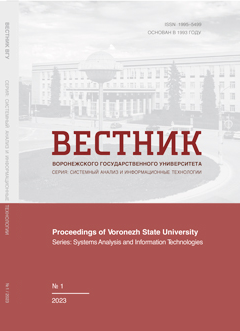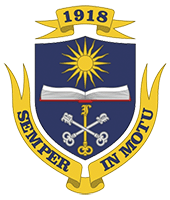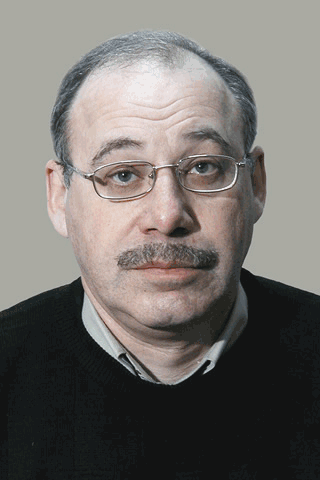Использование методов глубокого обучения для анализа изображений аэрокосмического мониторинга в интересах обнаружения элементов новизны на местности
Аннотация
Работа посвящена разработке математического и программного обеспечения в интересах обнаружения элементов новизны на аэрокосмических снимках городской, пригородной, лесистой местности и акваторий. Для достижения поставленной цели в ходе работы были исследованы традиционные и современные методы обнаружения изменений, а также популярные архитектуры сегментационных нейронных сетей, алгоритмы постобработки и сопоставления изображений. Основной идеей предлагаемого метода и реализуемых на его основе алгоритмов является применение постклассификационного подхода. Он базируется на оценке разности пары бинарных масок, получаемых в результате сегментации анализируемых разновременных изображений с использованием сегментационных нейронных сетей и специализированных алгоритмов постобработки. При этом предлагается реализовать обнаружение элементов новизны в условиях различий геометрических параметров сравниваемых изображений, которые большинство предложенных ранее методов и алгоритмов не учитывают. Такой подход позволяет использовать результирующие бинарные маски для качественного сопоставления нового и ранее отснятого снимка, коррекции перспективы и, в конечном итоге оценки их разности. Кроме этого, в отличие от большинства предшествующих работ, предлагается обнаруживать не только изменённые объекты, но и определять их классы и такие связанные топографические объекты, как: здания, дороги, деревья и водные объекты. Это предоставляет возможность использования метода в приложениях фотограмметрии. Ввиду отсутствия объективных количественных данных для оценки точности обнаружения было осуществлено визуальное тестирование. В результате был сделан вывод о том, что предложенный подход весьма хорошо работает лишь для обнаружения крупных изменений, поскольку реализованный метод обнаружения имеет высокую чувствительность к малейшим изменениям.
Скачивания
Литература
2. Mitrova I. A. (2006) Izuchenie dinamiki prirodnyh processov i ob”ektov po aero- i kosmicheskim snimkam [Studying the dynamics of natural processes and objects from aerial and space images]. Moscow, MIIGAiK. 77 pp. (in Russian)
3. Chen C.-F., Son N., Chang N., Chen C.-R., Chang L., Valdez M., Centeno G., Thompson C. A. and Aceituno J. (2013) Multi-Decadal Mangrove Forest Change Detection and Prediction in Honduras, Central America, with Landsat Imagery and a Markov Chain Model. Remote. Sens. 5. P. 6408–6426. DOI
4. Paparoditis N., Cord M., Jordan M. and Cocquerez J.-P. (1998) Building Detection and Reconstruction from Mid- and High-Resolution Aerial Imagery. Computer Vision and Image Understanding. 72(2). P. 122–142, DOI
5. Bruzzone L. and Prieto D. F. (2000) Automatic analysis of the difference image for unsupervised change detection. IEEE Transactions on Geoscience and Remote Sensing. 38(3). P. 1171–1182, DOI
6. Sagalovich V. N., Fal’kov E. Ya. and Careva T. I. (2008) Obnaruzhenie izmenenij na zemnoj poverhnosti po raznovremennym mul’tispektral’nym izobrazheniyam [Detection of changes on the earth’s surface from multi-temporal multispectral images]. Issledovanie Zemli iz kosmosa. (5). P. 37–41. (in Russian)
7. Todd W. J. (1977) Urban and regional land use change detected by using Landsat data. Journal of Research of the U.S. Geological Survey. 5(5). P. 529–534.
8. Jackson R. (1983) Spectral indices in N-Space. Remote Sensing of Environment. 13(5). P. 409–421. DOI
9. Malila W. A. (1980) Change Vector Analysis: An Approach for Detecting Forest Changes with Landsat. IEEE Proceedings of the annual symposium on machine processing of remotely sensed data. P. 1565–1596.
10. Plotnikova M. A. and Hlebnikova E. P. (2020) Issledovanie metodov vyyavleniya izmenenij territorij po raznovremennym kosmicheskim izobrazheniyam [Investigation of methods for detecting changes in territories using multi-temporal space images]. Interekspo GeoSibir’. 6(2). P. 48–58.
11. Hlebnikova E. P. and Plotnikova M. A. (2019) Ispol’zovanie raznovremennyh kosmicheskih snimkov pri monitoringe gorodskih territorij [Using multi-temporal space images in monitoring urban areas]. Regulirovanie zemel’no-imushchestvennyh otnoshenij v Rossii: pravovoe i geoprostranstvennoe obespechenie, ocenka nedvizhimosti, ekologiya, tekhnologicheskie resheniya. 1. P. 248–252. (in Russian)
12. Luppino L. T., Bianchi F. M., Moser G. and Anfinsen S. N. (2019). Unsupervised Image Regression for Heterogeneous Change Detection. IEEE Transactions on Geoscience and Remote Sensing. 57(12). P. 9960–9975. DOI
13. Myasnikov F. S. (2015) Analiz algoritmov obnaruzheniya izmenenij na kosmicheskih snimkah [Analysis of Algorithms for Detecting Changes in Satellite Images]. Peredacha, obrabotka, vospriyatie tekstovoj i graficheskoj informacii [Transmission, processing, perception of text and graphic information]: Proceedings of the International scientific and practical conference, March 19–20, Yekaterinburg, Russia. P. 66–70. (in Russian)
14. Cui B., Zhang Y., Yan L., Wei J. and Wu H. (2019) An Unsupervised SAR Change Detection Method Based on Stochastic Subspace Ensemble Learning. Remote Sensing. 11(11). P. 1314. DOI
15. Benedek C. and Sziranyi T. (2009) Change Detection in Optical Aerial Images by a Multilayer Conditional Mixed Markov Model. IEEE Transactions on Geoscience and Remote Sensing. 47(10). P. 3416–3430. DOI
16. Bazi Y., Melgani F. and Al-Sharari H. D. (2010) Unsupervised Change Detection in Multispectral Remotely Sensed Imagery With Level Set Methods. IEEE Transactions on Geoscience and Remote Sensing. 48(8). P. 3178–3187. DOI
17. Cao G., Zhou L. and Li Y. (2016) A new change-detection method in high-resolution remote sensing images based on a conditional random field model. International Journal of Remote Sensing. 37(5). P. 1173–1189. DOI
18. Lv P., Zhong Y., Zhao J. and Zhang L. (2018) Unsupervised Change Detection Based on Hybrid Conditional Random Field Model for High Spatial Resolution Remote Sensing Imagery. IEEE Transactions on Geoscience and Remote Sensing. 56(7). P. 4002–4015. DOI
19. Jian P., Chen K. and Zhang C. (2016) A hypergraph-based context-sensitive representation technique for VHR remote-sensing image change detection. International Journal of Remote Sensing. 37(8). P. 1814–1825. DOI
20. Chen G., Hay G., Carvalho L. and Wulder M. (2012) Object-based change detection. International Journal of Remote Sensing. 33(4). P. 4434–4457. DOI
21. Ma L., Liu Y., Zhang X., Ye Y., Yin G. and Johnson B. (2019) Deep learning in remote sensing applications: A meta-analysis and review. ISPRS Journal of Photogrammetry and Remote Sensing. 152. P. 166–177. DOI
22. Khelifi L. and Mignotte M. (2020) Deep learning for change detection in remote sensing images: comprehensive review and meta-analysis. IEEE Access. 8. P. 126385–126400. DOI
23. Sakurada K. and Okatani T. (2015) Change detection from a street image pair using CNN features and superpixel segmentation. In: Xie, X., Jones, M. W., and Tam, G. K. L. (eds) Procedings of the British Machine Vision Conference 2015, 7–10 September, Swansea, UK, BMVA Press. P. 61.1–61.12. DOI
24. El Amin A. M., Liu Q. and Wang Y. (2017) Zoom out CNNs features for optical remote sensing change detection. In 2017 2nd International Conference on Image, Vision and Computing (ICIVC), 2–4 June, Chengdu, China, IEEE. P. 812–817. DOI
25. Zhang M., Xu G., Chen K., Yan M. and Sun X. (2019). Triplet-Based Semantic Relation Learning for Aerial Remote Sensing Image Change Detection. IEEE Geoscience and Remote Sensing Letters. 16(2). P. 266–270. DOI
26. Niu X., Gong M., Zhan T. and Yang Y. (2019). A Conditional Adversarial Network for Change Detection in Heterogeneous Images. IEEE Geoscience and Remote Sensing Letters. 16(1). P. 45–49. DOI
27. Lebedev M. A., Vizilter Y. V., Vygolov O. V., Knyaz V. A. and Rubis A. Y. (2018) Change detection in remote sensing images using conditional adversarial networks. The International Archives of the Photogrammetry, Remote Sensing and Spatial Information Sciences. 2. P. 565–571. DOI
28. Chen H. and Shi Z. (2020) A Spatial-Temporal Attention-Based Method and a New Dataset for Remote Sensing Image Change Detection. Remote Sensing. 12(10). P. 1662. DOI
29. Isola P., Zhu J.-Y., Zhou T. and Efros A. A. (2017) Image-to-image translation with conditional adversarial networks. In 2017 IEEE Conference on Computer Vision and Pattern Recognition (CVPR), 21–26 July, Honolulu, HI, USA, IEEE. P. 5967–5976. DOI
30. Caye Daudt R., Le Saux B. and Boulch A. (2018) Fully convolutional Siamese networks for change detection. In 2018 25th IEEE International Conference on Image Processing (ICIP), 7–10 October, Athens, Greece, IEEE. P. 4063–4067. DOI
31. Daudt R. C., Saux B. L., Boulch A. and Gousseau Y. (2018) Multitask learning for largescale semantic change detection, arXiv [Electronic resource]. URL
32. He K., Zhang X., Ren S. and Sun J. (2016) Deep residual learning for image recognition. In 2016 IEEE Conference on Computer Vision and Pattern Recognition (CVPR), 27–30 June, Las Vegas, NV, USA, IEEE. P. 770–778. DOI
33. Alcantarilla P. F., Stent S., Ros G., Arroyo R. and Gherardi R. (2018) Street-view change detection with deconvolutional networks. Autonomous Robots. 42(7). P. 1301–1322. DOI
34. Peng D., Zhang Y. and Guan H. (2019). End-to-End Change Detection for High Resolution Satellite Images Using Improved UNet++. Remote Sensing. 11(11). P. 1382. DOI
35. Zhou Z., Rahman Siddiquee M. M., Tajbakhsh N. and Liang J. (2018) UNet++: A Nested U-Net Architecture for Medical Image Segmentation. Deep Learning in Medical Image Analysis and Multimodal Learning for Clinical Decision Support. 11035. P. 3–11. DOI
36. Zhang C., Yue P., Tapete D., Jiang L., Shangguan B., Huang L. and Liu G. (2020) A deeply supervised image fusion network for change detection in high-resolution bi-temporal remote sensing images. ISPRS Journal of Photogrammetry and Remote Sensing. 166. P. 183–200. DOI
37. Chen J., Yuan Z., Peng J., Chen L., Huang H., Zhu J., Liu Y. and Li H. (2021) DASNet: Dual Attentive Fully Convolutional Siamese Networks for Change Detection in High-Resolution Satellite Images. IEEE Journal of Selected Topics in Applied Earth Observations and Remote Sensing. 14. P. 1194–1206. DOI
38. Fang S., Li K., Shao J. and Li Z. (2022) SNUNet-CD: A Densely Connected Siamese Network for Change Detection of VHR Images. IEEE Geoscience and Remote Sensing Letters. 19. P. 1–5. DOI
39. Daudt R. C., Saux B. L., Boulch A. and Gousseau Y. (2019) Multitask Learning for Largescale Semantic Change Detection. arXiv [Electronic resource]. URL
40. Shelhamer E., Long J. and Darrell T. (2017) Fully convolutional networks for semantic segmentation. IEEE transactions on pattern analysis and machine intelligence. 39(4). P. 640–651. DOI
41. Ronneberger O., Fischer P. and Brox T. (2015) U-Net: Convolutional Networks for Biomedical Image Segmentation. Lecture Notes in Computer Science. P. 234–241. DOI
42. Badrinarayanan V., Kendall A. and Cipolla R. (2017). SegNet: A Deep Convolutional Encoder-Decoder Architecture for Image Segmentation. IEEE Transactions on Pattern Analysis and Machine Intelligence. 39(12). P. 2481–2495. DOI
43. Zhao H., Shi J., Qi X., Wang X. and Jia J. (2017) Pyramid scene parsing network. In 2017 IEEE Conference on Computer Vision and Pattern Recognition (CVPR), 21-26 July, Honolulu, HI, USA, IEEE. P. 6230–6239. DOI
44. Lin T.-Y., Dollar P., Girshick R., He K., Hariharan B. and Belongie S. (2017) Feature pyramid networks for object detection. In 2017 IEEE Conference on Computer Vision and Pattern Recognition (CVPR), 21-26 July, Honolulu, HI, USA, IEEE. P. 936–944. DOI
45. Chen L.-C., Zhu Y., Papandreou G., Schroff F. and Adam H. (2018) Encoder-Decoder with Atrous Separable Convolution for Semantic Image Segmentation. Computer Vision – ECCV 2018. P. 833–851. DOI
46. Fu J., Liu J., Tian H., Li Y., Bao Y., Fang Z. and Lu H. (2019) Dual Attention Network for Scene Segmentation. In 2019 IEEE/CVF Conference on Computer Vision and Pattern Recognition (CVPR), 15–20 June, Long Beach, CA, USA, IEEE. DOI
47. Zhang F., Chen Y., Li Z., Hong Z., Liu J., Ma F., Han J. and Ding E. (2019) ACFNet: Attentional class feature network for semantic segmentation. In 2019 IEEE/CVF International Conference on Computer Vision (ICCV), 27 October–2 November, Seoul, Korea (South), IEEE. P. 6797–6806. DOI
48. Yuan Y., Chen X. and Wang J. (2020) Object-contextual representations for semantic segmentation. In Computer Vision – ECCV 2020. Cham: Springer International Publishing. P. 173–190. DOI
49. Krähenbühl P. and Koltun V. (2011) Efficient Inference in Fully Connected CRFs with Gaussian Edge Potentials. In Advances in neural information processing systems. P. 109–117. DOI
50. Zheng S., Jayasumana S., Romera-Paredes B., Vineet V., Su Z., Du D., Huang C. and Torr P.H.S. (2015) Conditional random fields as recurrent neural networks. In 2015 IEEE International Conference on Computer Vision (ICCV), 7–13 December, Santiago, Chile, IEEE. P. 1529–1537. DOI
51. Cheng H. K., Chung J., Tai Y.-W. and Tang C.-K. (2020) CascadePSP: Toward class-agnostic and very high-resolution segmentation via global and local refinement. In 2020 IEEE/ CVF Conference on Computer Vision and Pattern Recognition (CVPR), 13–19 June, Seattle, WA, USA, IEEE. P. 8887–8896. DOI
52. Rublee E., Rabaud V., Konolige K. and Bradski G. (2011) ORB: An efficient alternative to SIFT or SURF. In 2011 International Conference on Computer Vision, 6-13 November, Barcelona, Spain, IEEE. P. 2564–2571. DOI
53. Alcantarilla P. F., Bartoli A. and Davison A. J. (2012) KAZE Features. In Computer Vision – ECCV 2012. Berlin, Heidelberg : Springer Berlin Heidelberg. P. 214–227. DOI
54. Yang X. and Cheng K.-T. (2012). LDB: An ultra-fast feature for scalable Augmented Reality on mobile devices. 2012 IEEE International Symposium on Mixed and Augmented Reality (ISMAR). P. 49–57. DOI
55. Lowe D. G. (1999) Object recognition from local scale-invariant features. In Proceedings of the Seventh IEEE International Conference on Computer Vision, 20–27 September, Kerkyra, Greece, IEEE. P. 1150–1157. DOI
- Авторы сохраняют за собой авторские права и предоставляют журналу право первой публикации работы, которая по истечении 6 месяцев после публикации автоматически лицензируется на условиях Creative Commons Attribution License , которая позволяет другим распространять данную работу с обязательным сохранением ссылок на авторов оригинальной работы и оригинальную публикацию в этом журнале.
- Авторы имеют право размещать их работу в сети Интернет (например в институтском хранилище или персональном сайте) до и во время процесса рассмотрения ее данным журналом, так как это может привести к продуктивному обсуждению и большему количеству ссылок на данную работу (См. The Effect of Open Access).



















